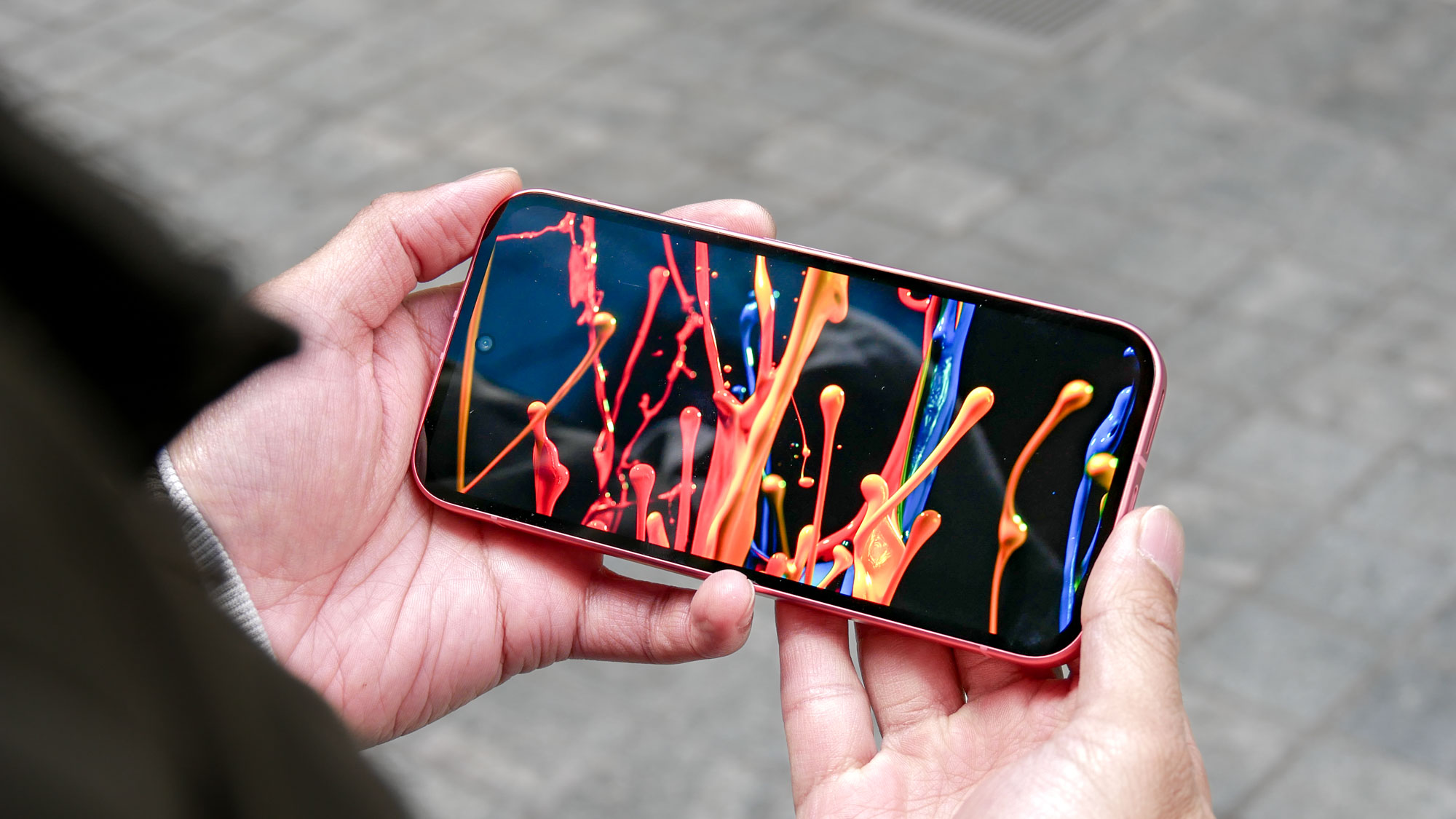Tom's Guide Verdict
The OnePlus 3 has the speed, design and price to put a lot of other flagship phones to shame.
Pros
- +
Gorgeous all-metal design
- +
Vivid 5.5-inch AMOLED display
- +
First phone with 6GB of RAM
- +
Top-notch performance
Cons
- -
Camera not great in low light
- -
Average battery life
- -
No SD card slot
Why you can trust Tom's Guide
How much should a flagship phone cost? If you had asked me six months ago, I probably would have said between $600 and $700. But now, the OnePlus 3 gives you flagship specs for just $399. For that price, you get the world's first phone to have 6GB of RAM, along with a sharp 16-megapixel camera, a rich AMOLED display and superfast battery charging. Even more important is that OnePlus didn't cut corners to get there. The phone's exquisitely crafted aluminum body begs to be touched, and OnePlus' OxygenOS only improves upon Android 6.0.
The OnePlus 3 would be a great deal even for $200 more, but at $399, its combination of price and performance is unbeatable.
Design: Moving up to all-metal
At a time when every all-metal phone gets compared to the iPhone, the OnePlus 3 (available in graphite or soft gold) doesn't do a ton to distinguish itself. But the devil is in the details: The OnePlus 3 upgrades the removable-back design on the OnePlus 2 and is now on the same level as other flagship handsets. And you can tell this wasn't a hasty move, because the subtly curved edges around the display and the ports and speaker grille on the bottom feature precision not found on OnePlus' previous phones.
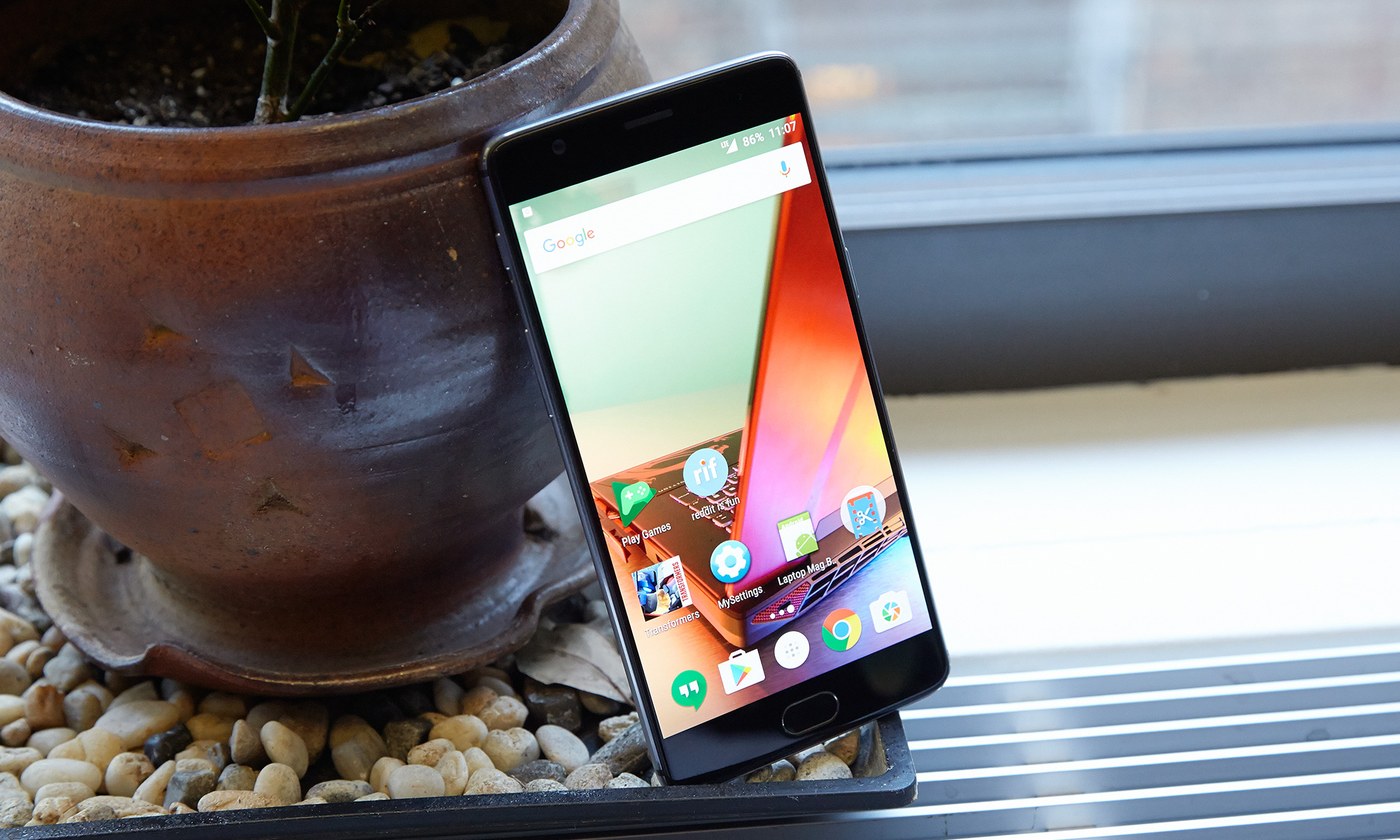
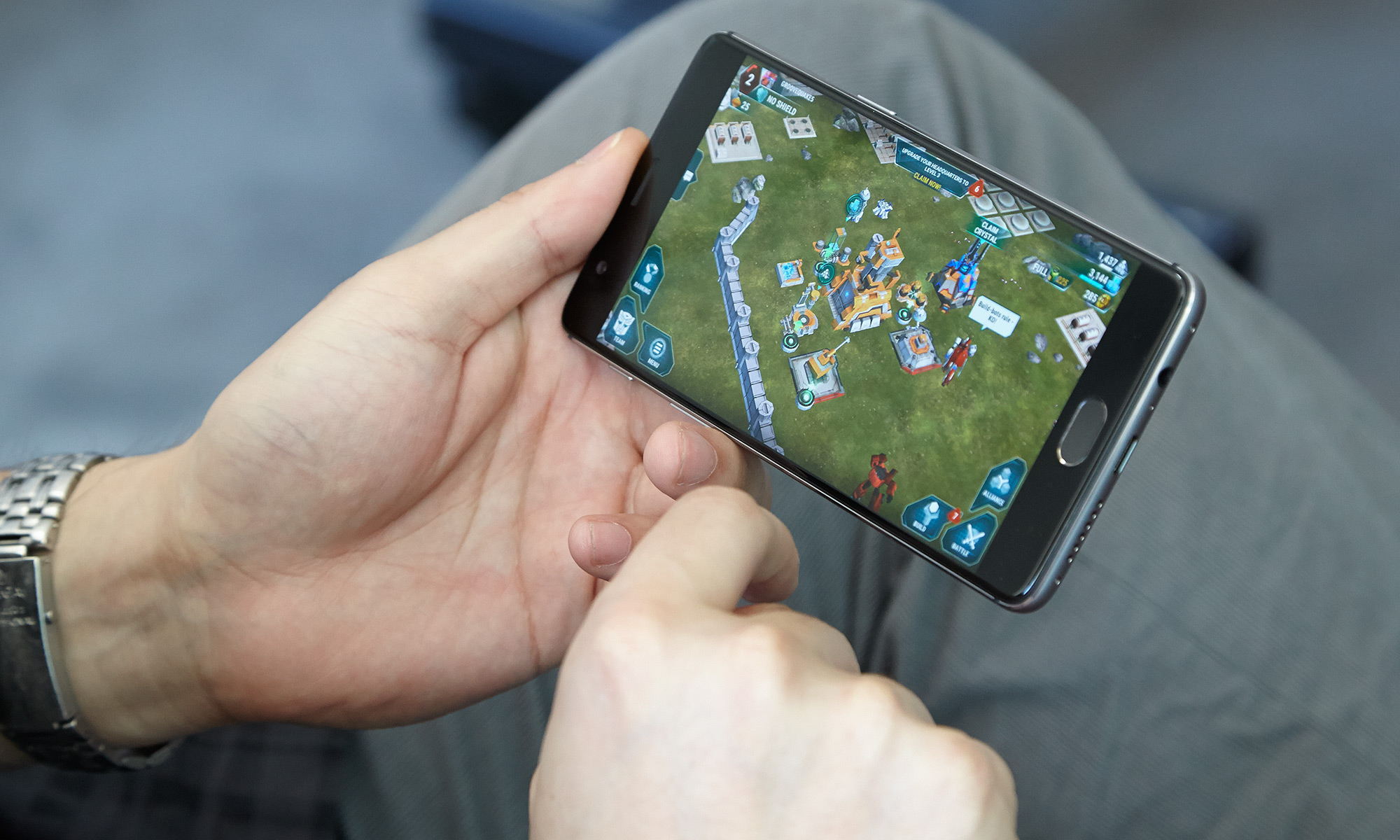
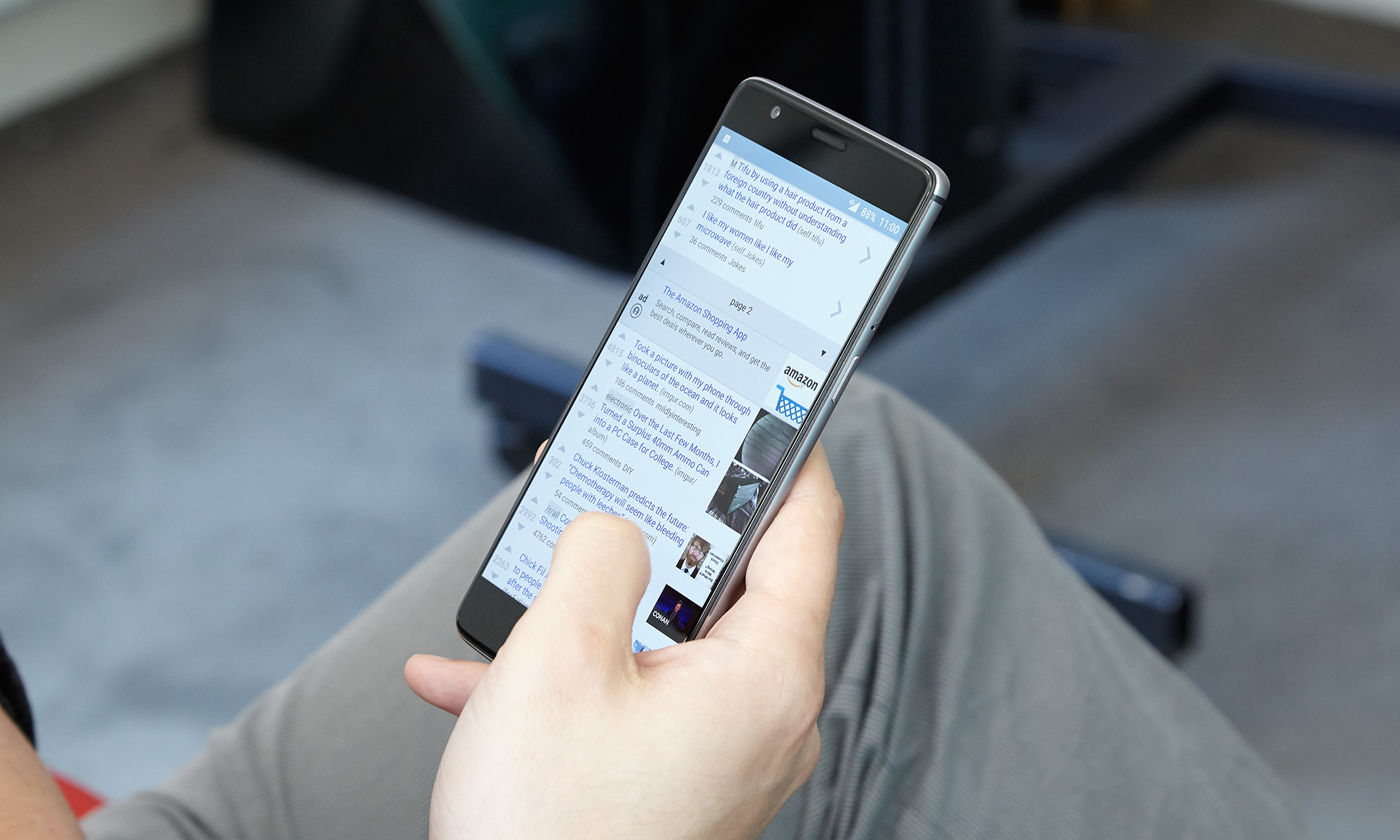
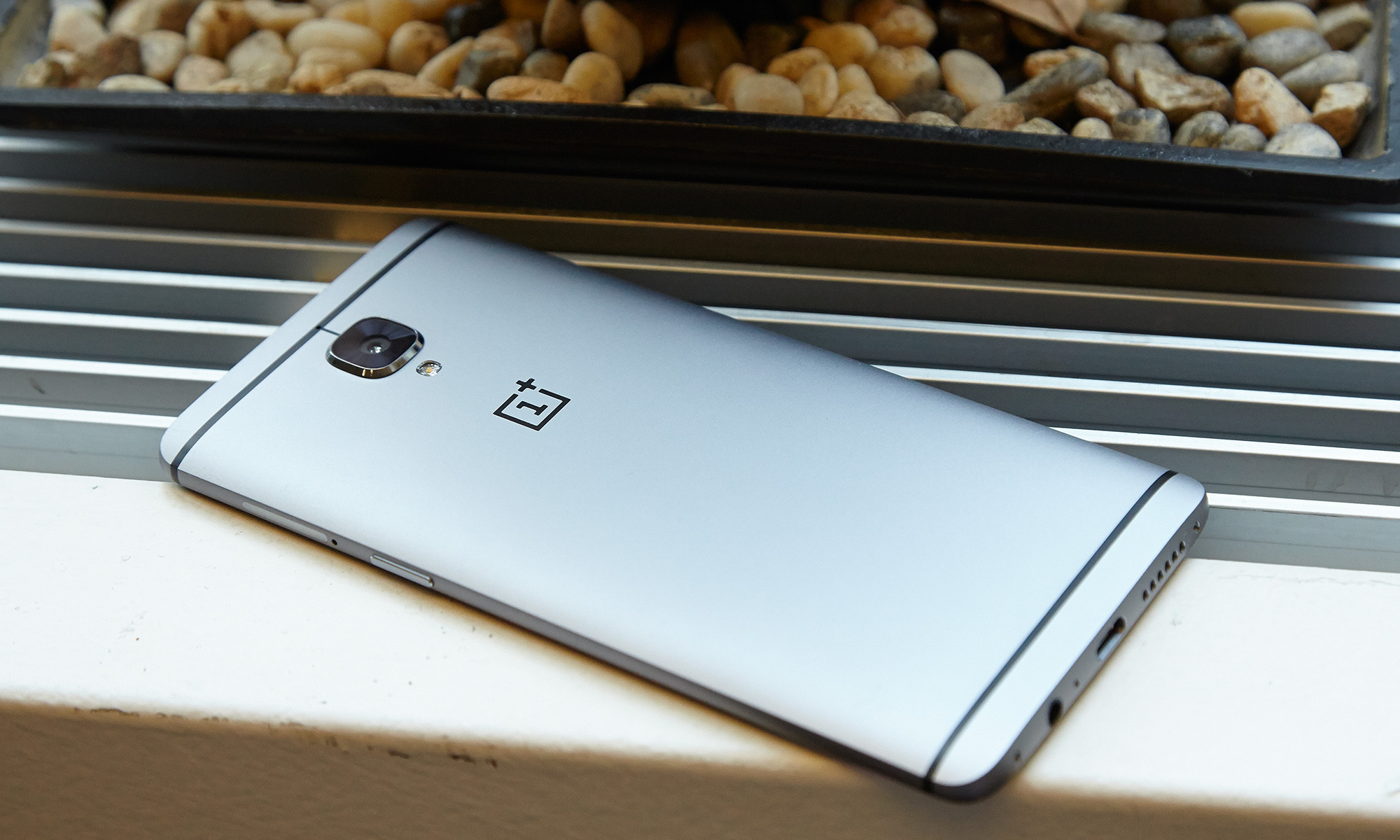
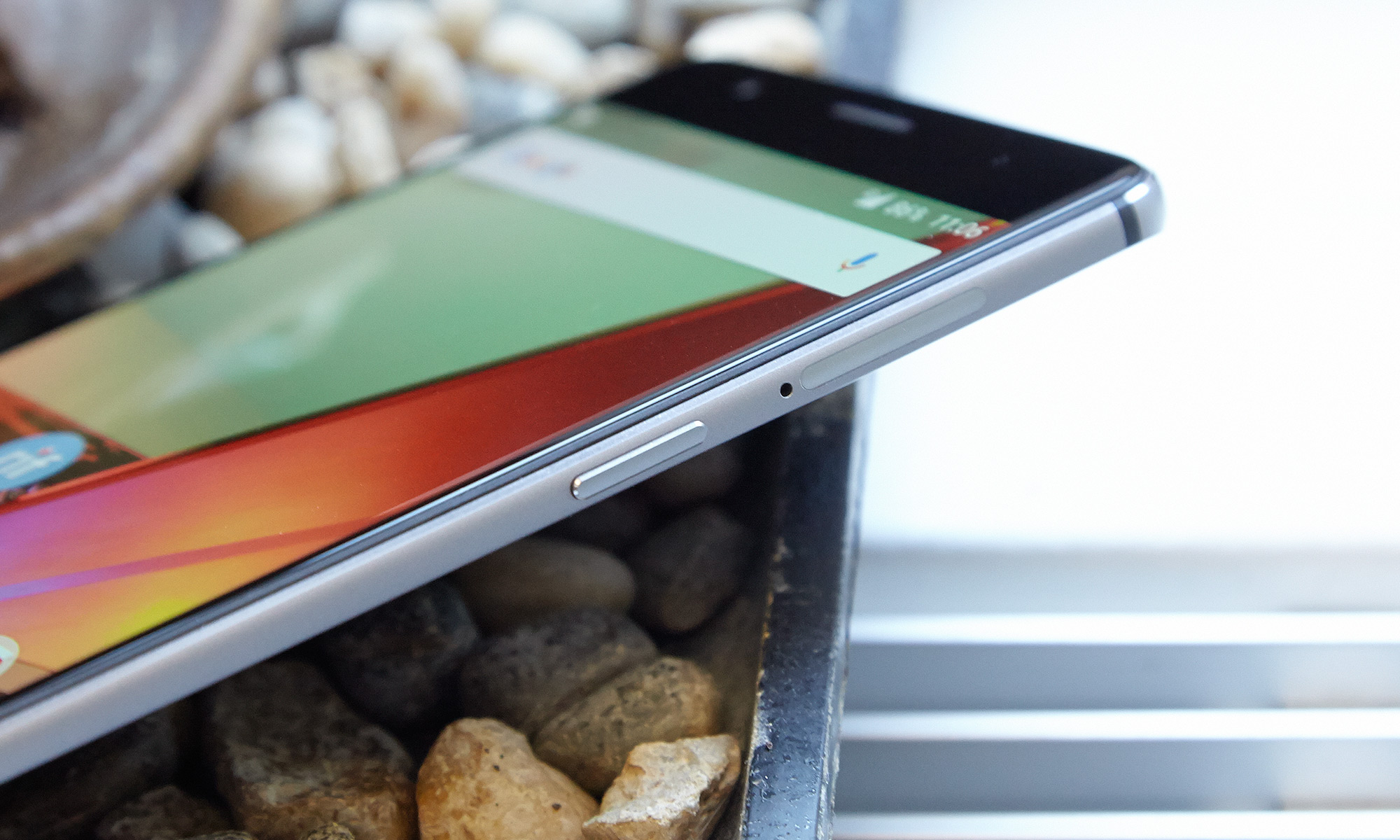
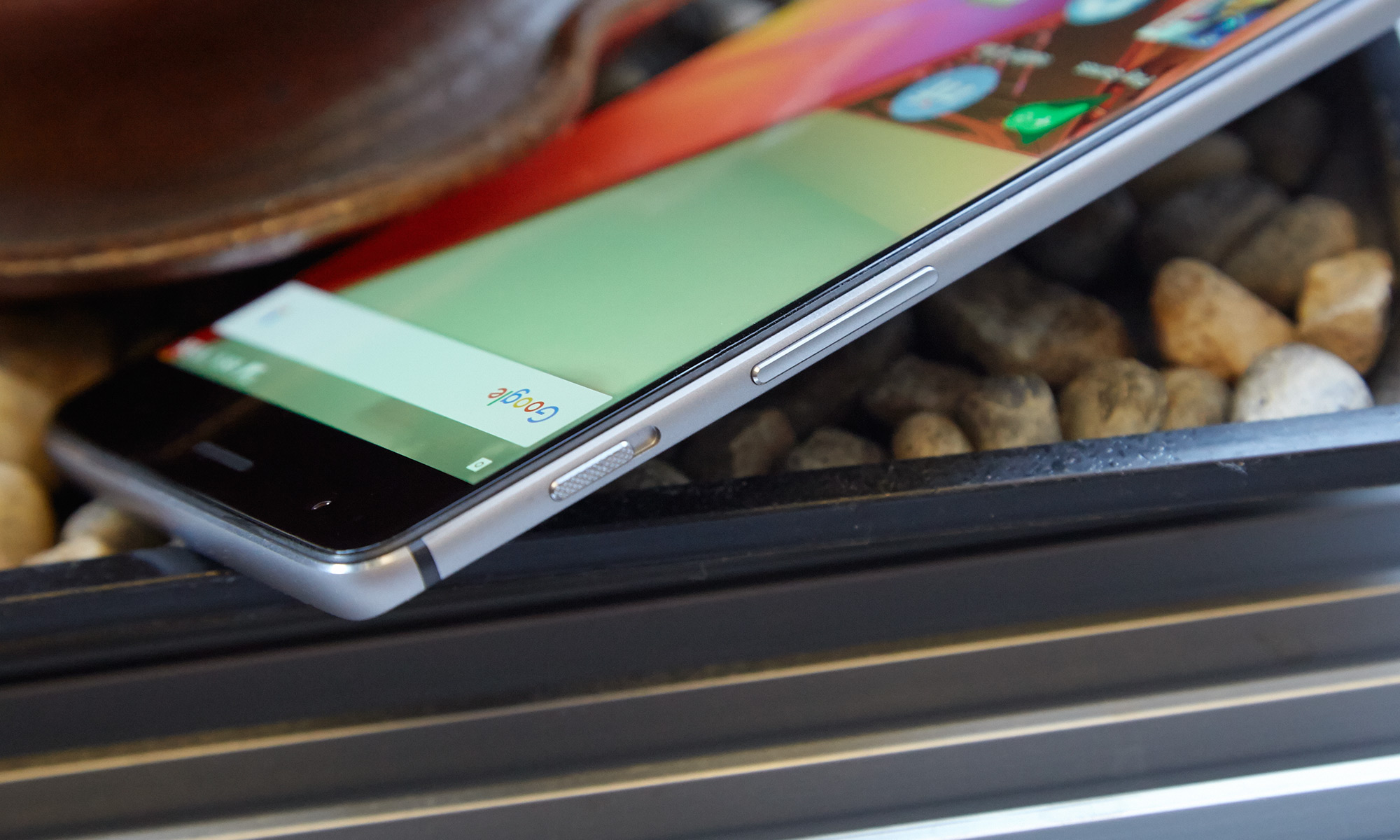
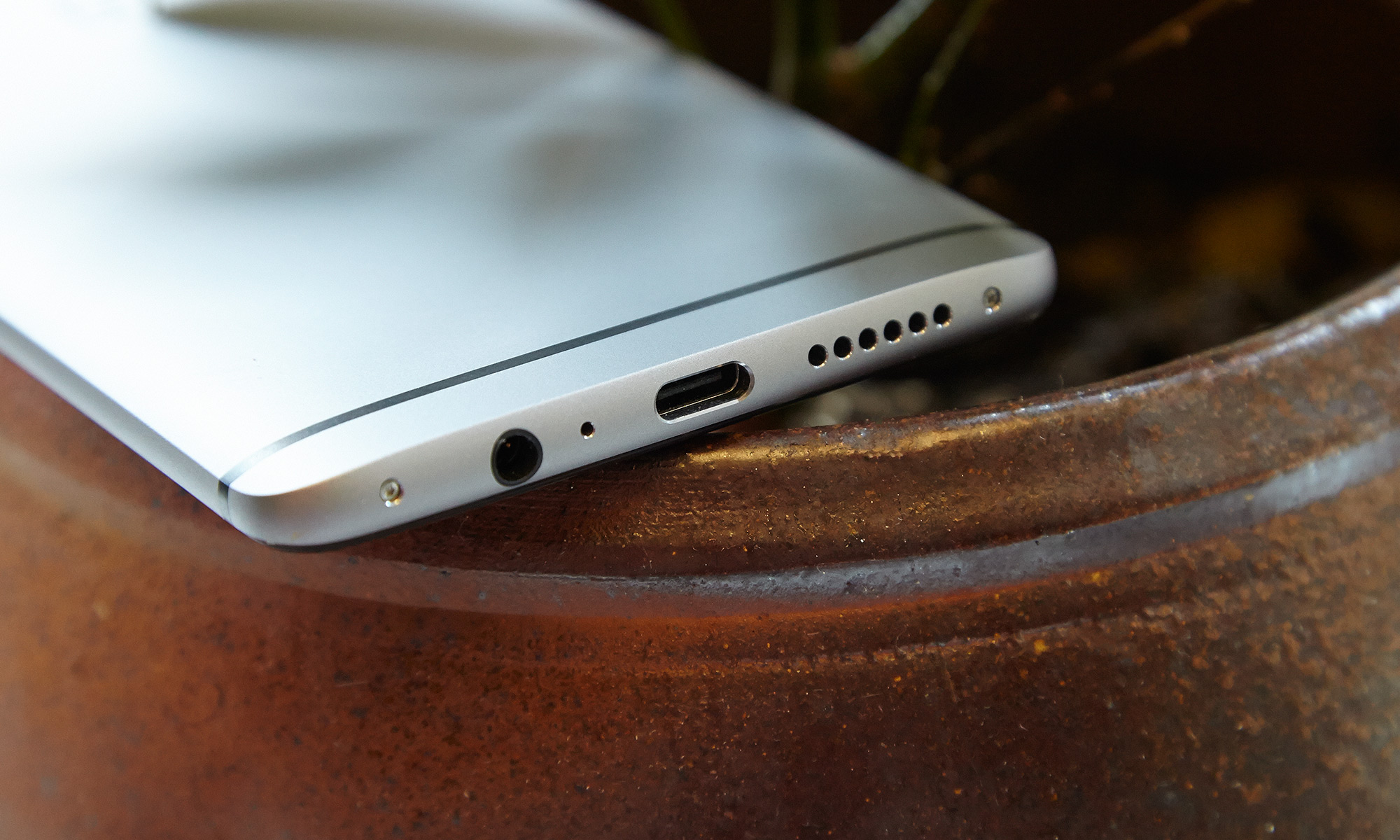
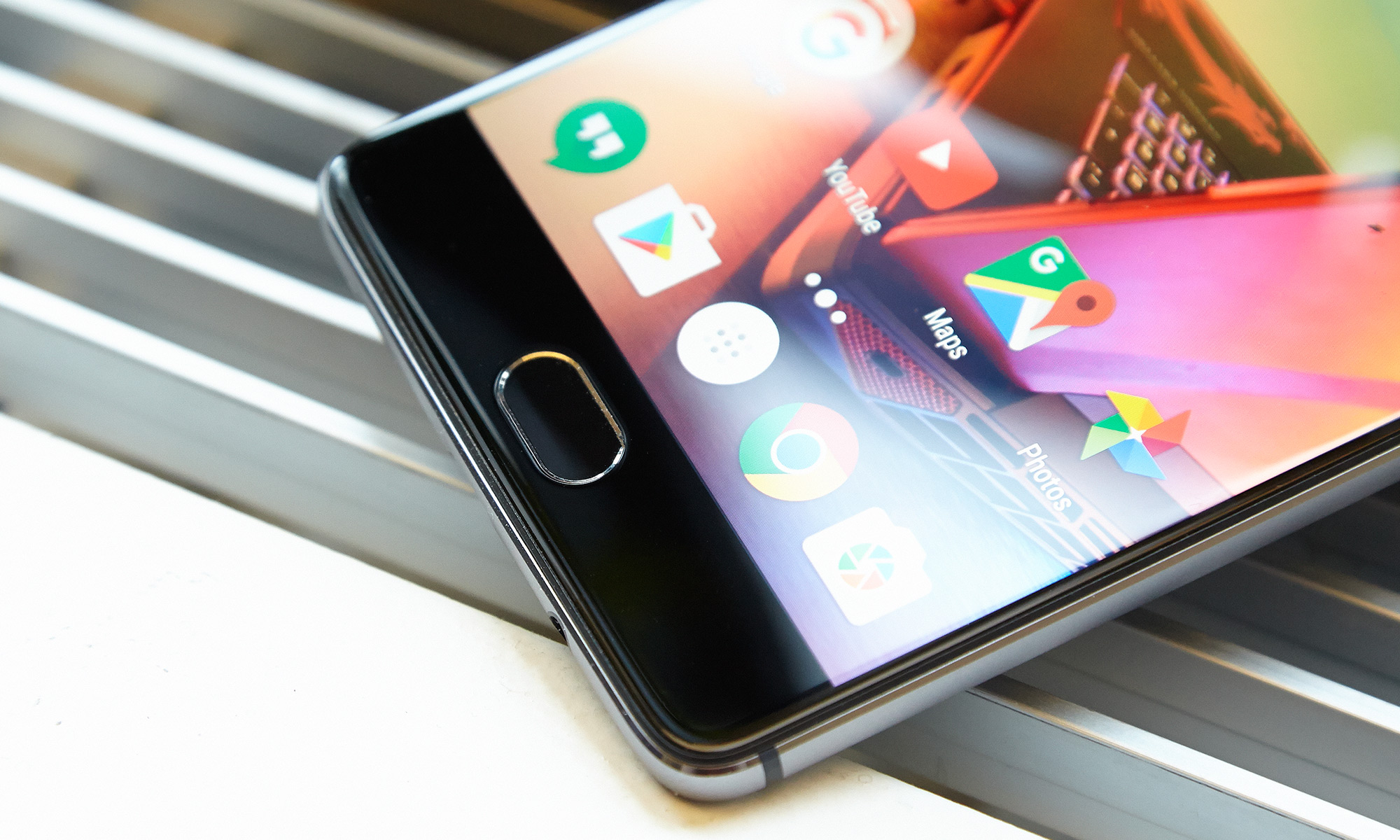
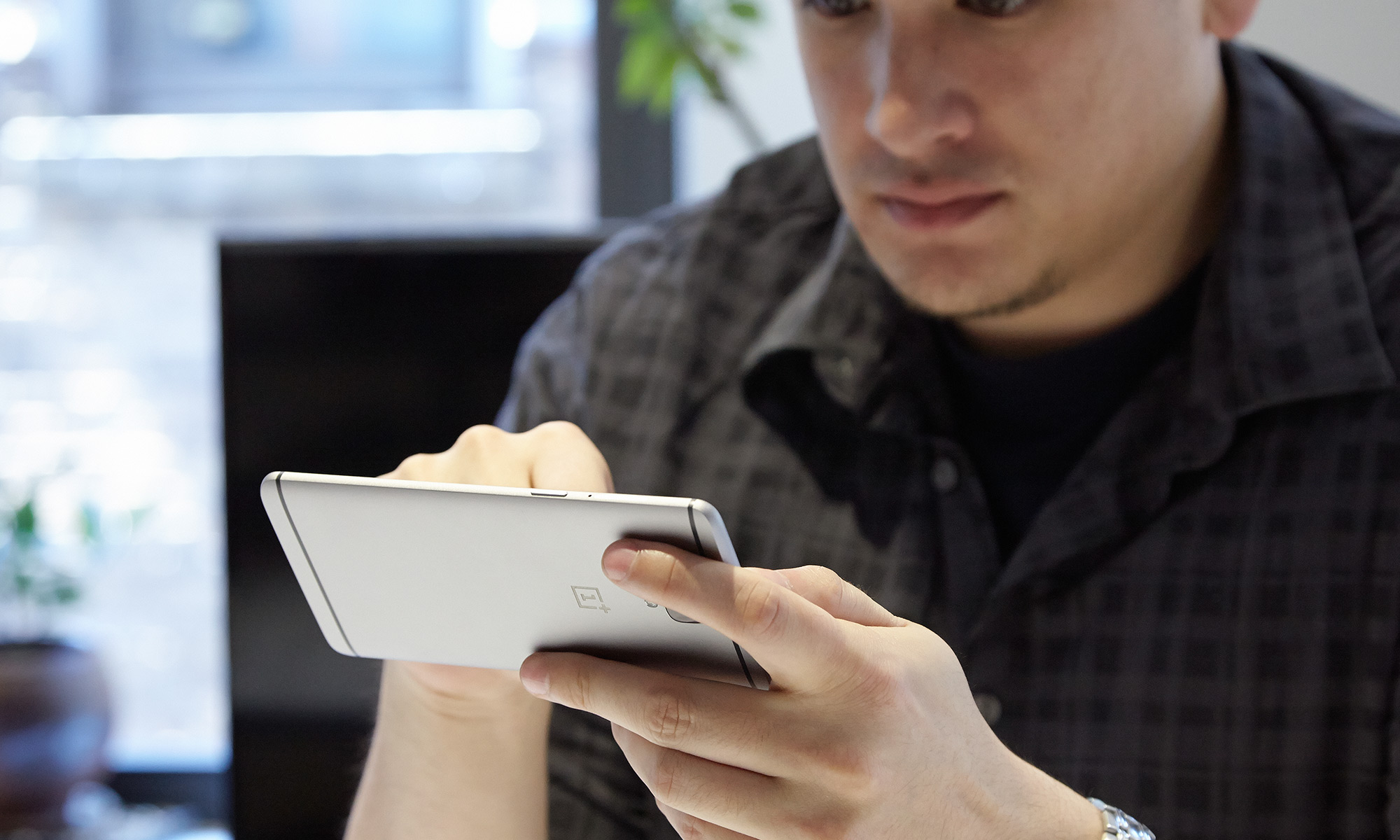
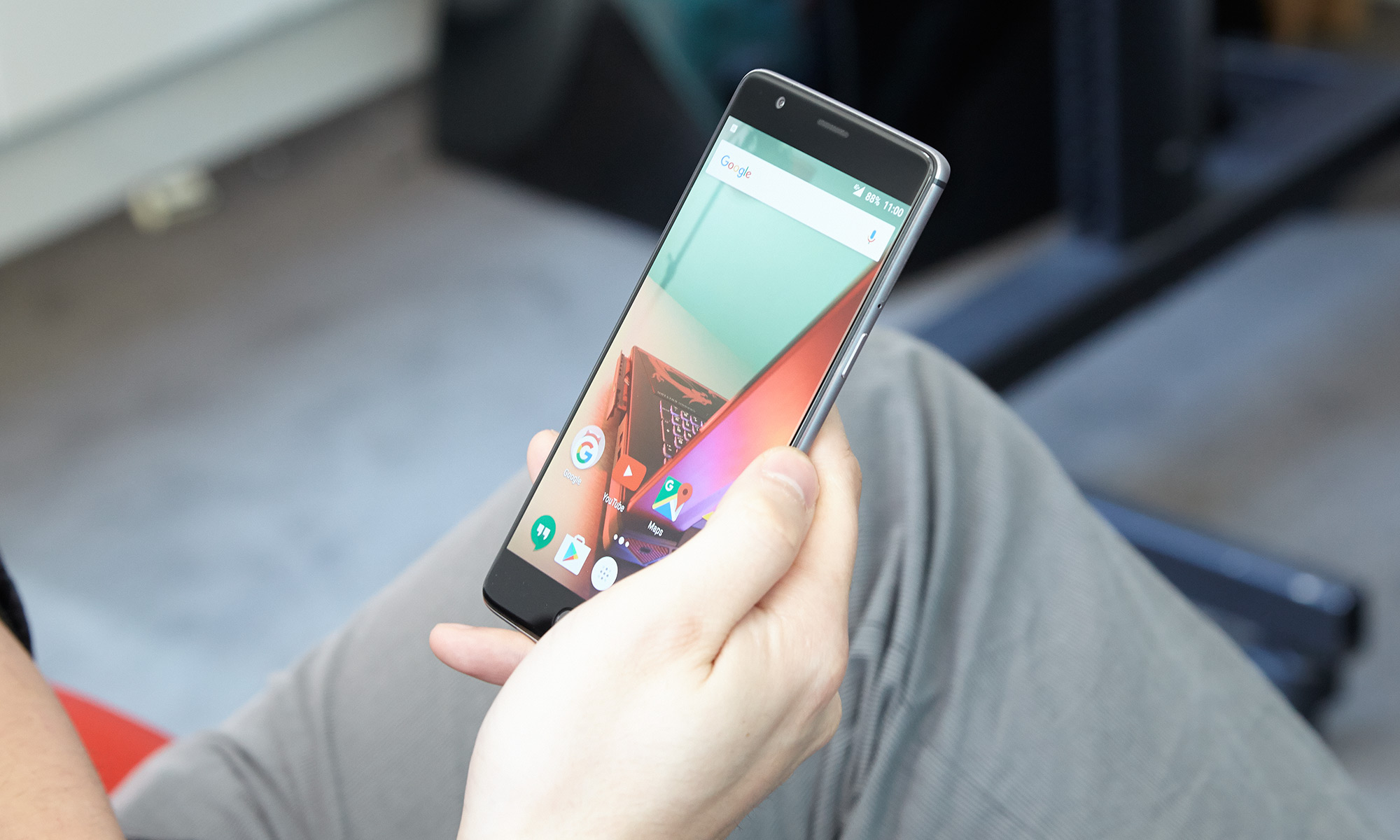
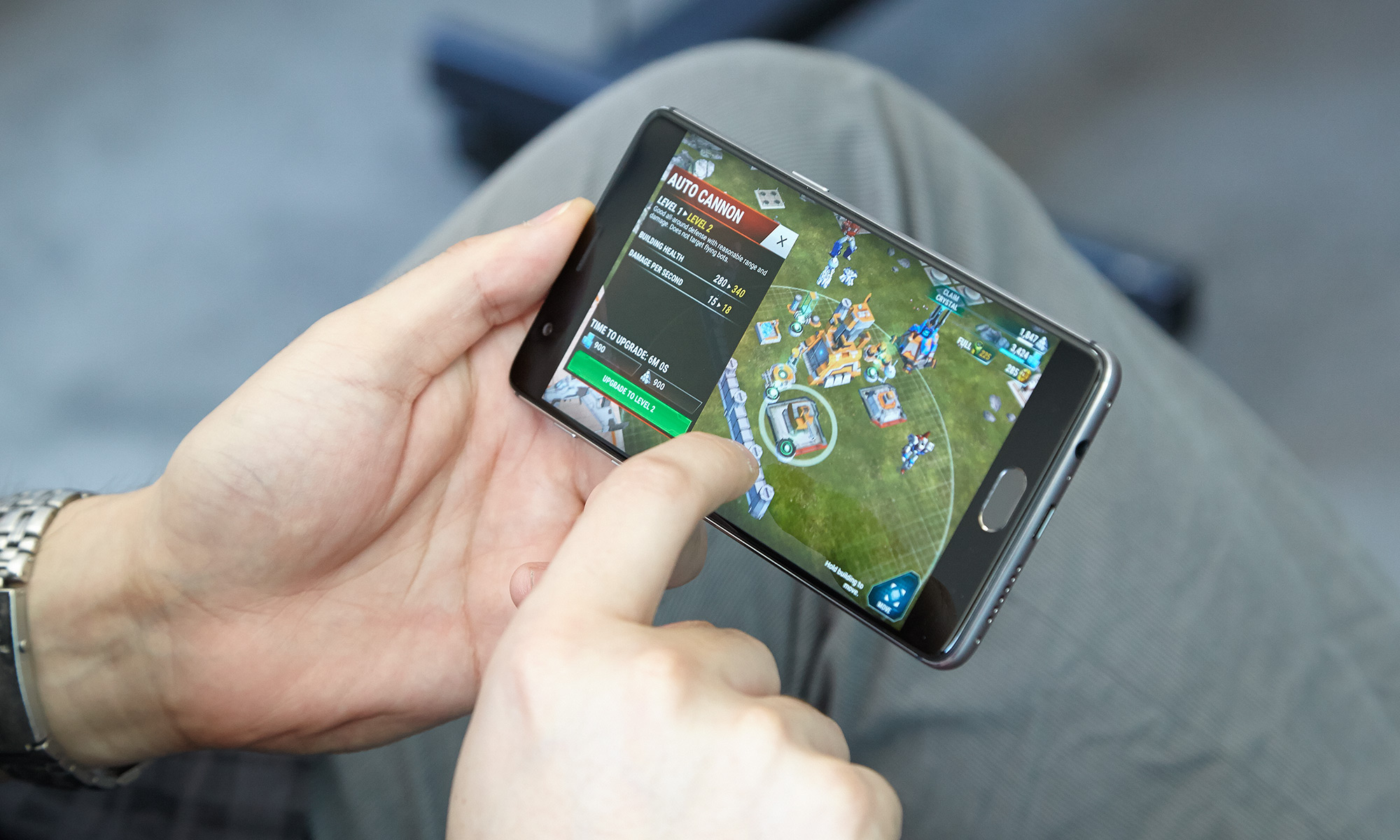
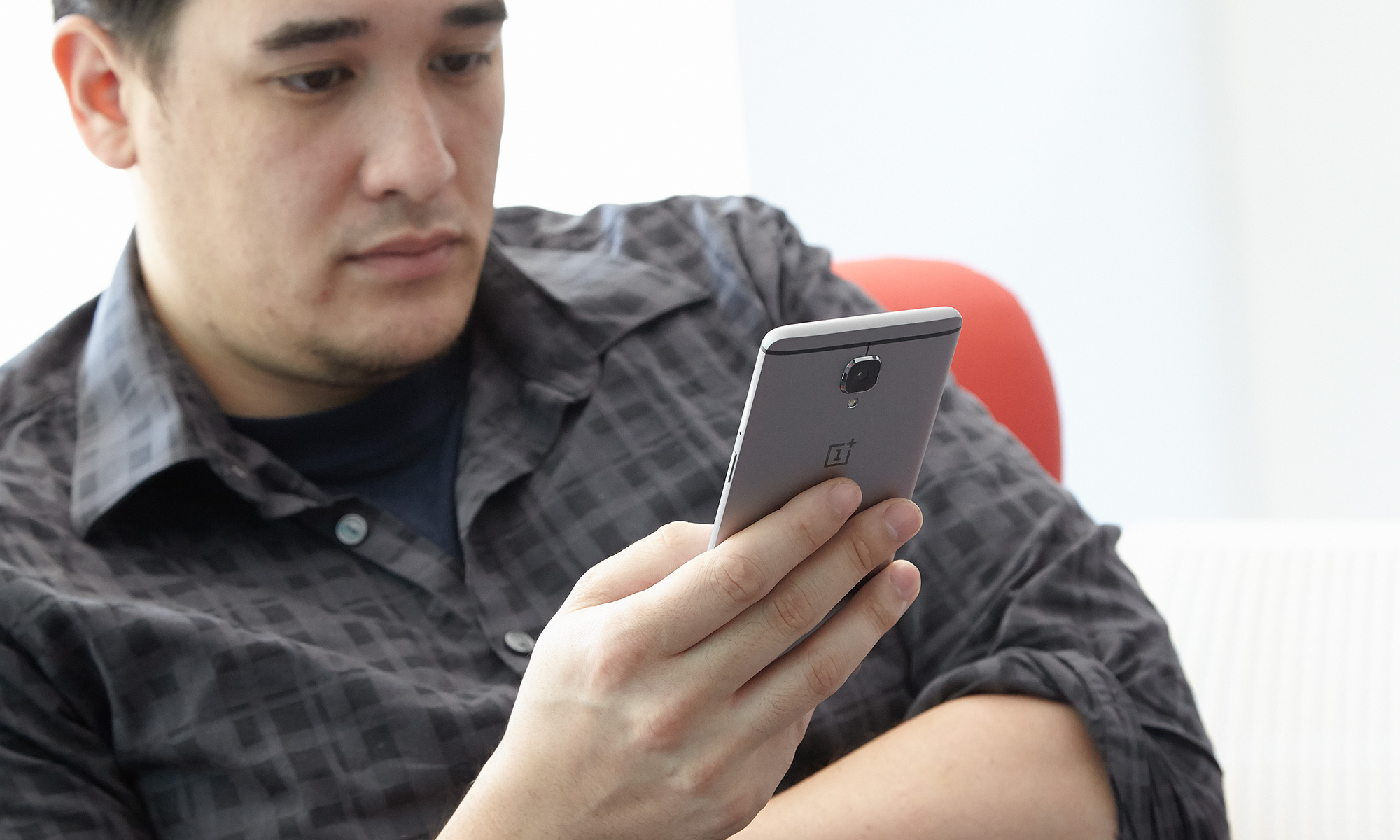

The capacitive home button on the front features a fingerprint sensor that feels as fast as anything on the market; it's flanked by two additional touch buttons for home and menu. If you dive into the settings, you even get the luxury of swapping the functions of each side.
The OnePlus 3's AMOLED display delights with deep, inky blacks, and vibrant colors.
OnePlus has also done a clever job of integrating one of Android 6.0's features into the phone's design: The diamond-cut slider on the right features three positions for All, Priority and Silent, to let you set which notifications deserve your attention.

The company also claims that the OnePlus 3 has some of the slimmest bezels around, although a quick comparison with the similarly sized 5.5-inch Samsung Galaxy S7 Edge shows that Samsung still holds a very slight advantage in screen-to-body ratio. At 6.01 x 2.94 x 0.28 inches and 5.57 ounces, the OnePlus 3 is just a tiny bit bigger, though thinner, than the 5.94 x 2.85 x 0.30-inch, 5.53-ounce Galaxy S7.
Display: Alluring AMOLED
In addition to raising the level of its design, OnePlus has made the switch to AMOLED on the OnePlus 3's 5.5-inch full-HD display. It's a difference that's noticeable right away, as the OnePlus 3 delights with deep, inky blacks, and vibrant colors that bring things like the Battlefield 1 trailer to new heights. I enjoyed the visions of sickly yellow-green mustard gas and streaks of red-hot machine-gun fire.
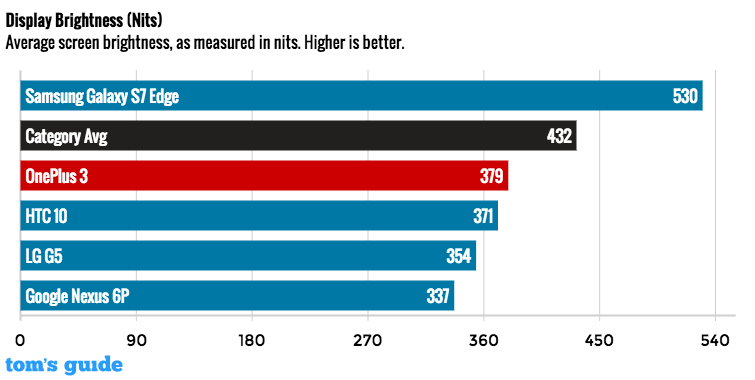
But if I had to nitpick, I'd say that, at 5.5 inches, the OnePlus 3's full-HD screen can look a bit inadequate. From 6 inches away, I could still see the pixel grid that makes up the screen, and with a max brightness of 379 nits, the OnePlus 3 can't quite match the luminance of the Galaxy S7 Edge's 530-nit display.
MORE: Cellphone Carriers: Best and Worst Customer Service
However, the OnePlus covered 192 percent of the sRGB color spectrum (100 percent is very good) and notched a Delta-E rating of 2.9 (0 is perfect), which makes it a match for the Galaxy S7 Edge in both color range (189 percent for Samsung's phone) and accuracy (Delta-E of 2.9). That's no mean feat, because I consider the S7 Edge's screen to be the best display you can get on a phone right now.
Cameras: Sharp, but low-light pics could be better
With the current crop of phone cameras, we've reached a point where every flagship handset can take a pretty sweet picture in bright light. And with its 16-megapixel rear cam, the OnePlus 3 proved that it can snap some impressive photos, especially if you're fond of landscape shots.
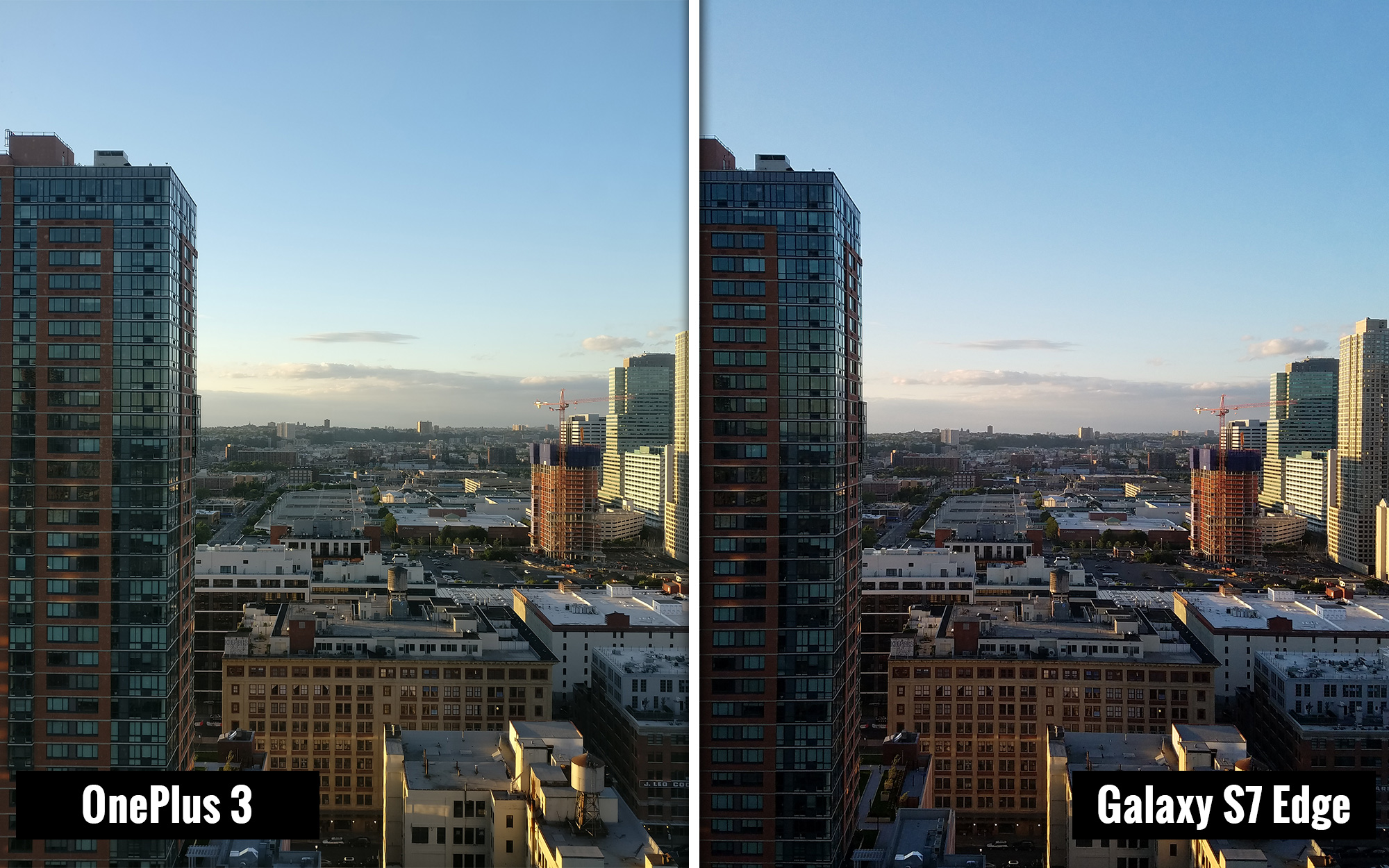
In a shot looking out across New Jersey, the OnePlus 3 stunned with an auto HDR photo that captured great detail in the sky and the buildings, without blowing out the fluffy clouds in the distance. Shots like these are also where the OnePlus 3's 16-MP camera has an advantage over the 12-MP Samsung Galaxy S7 Edge, because in wide-open pictures, a little extra resolution can make a difference.
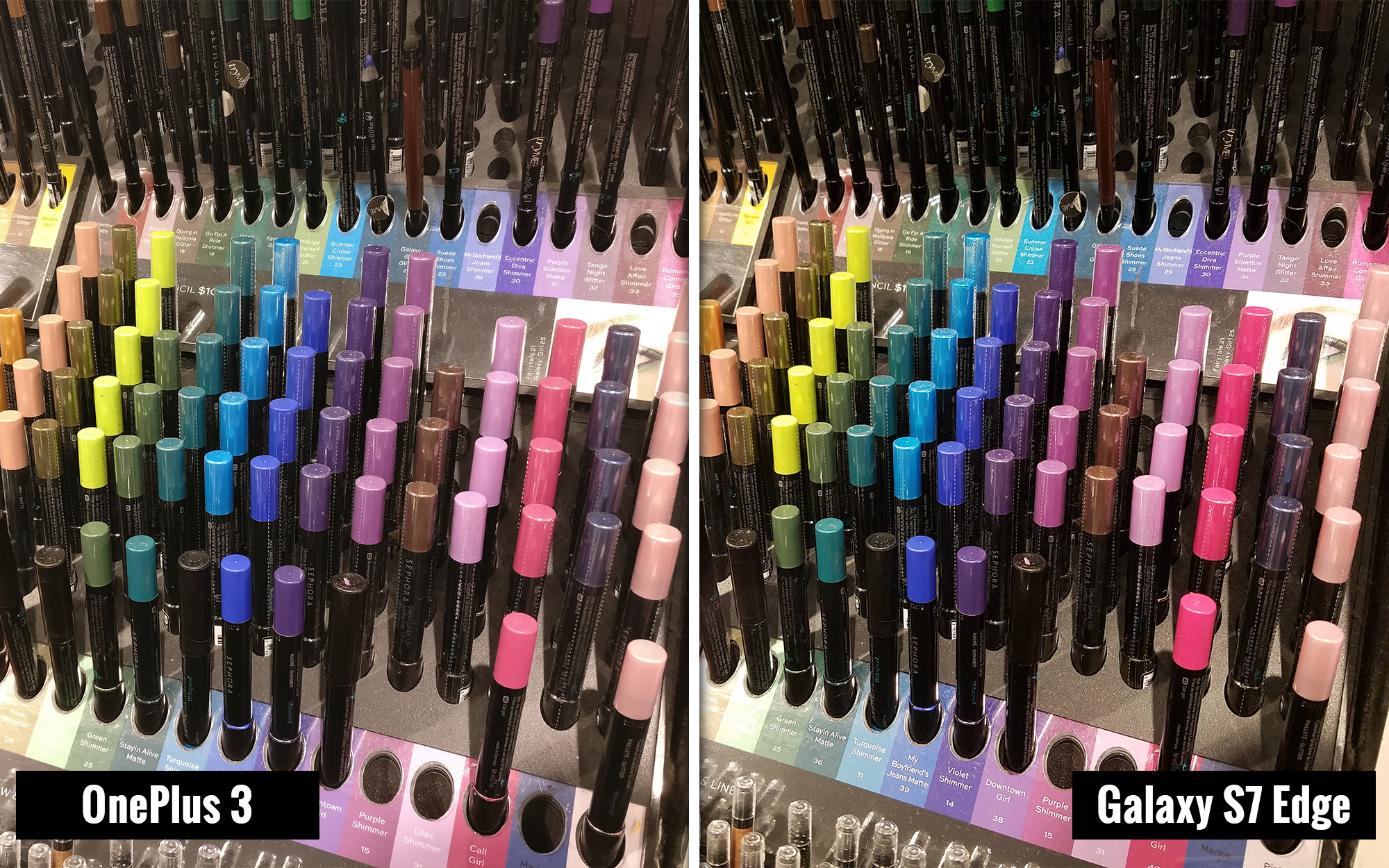
However, when I compared a shot of some colorful makeup, I found that pictures from Samsung's Galaxy S7 Edge featured colors that looked a bit richer than what I shot using the OnePlus 3. The 3's picture comes close, but if I had to pick one, I'd have to give the S7 Edge the win.
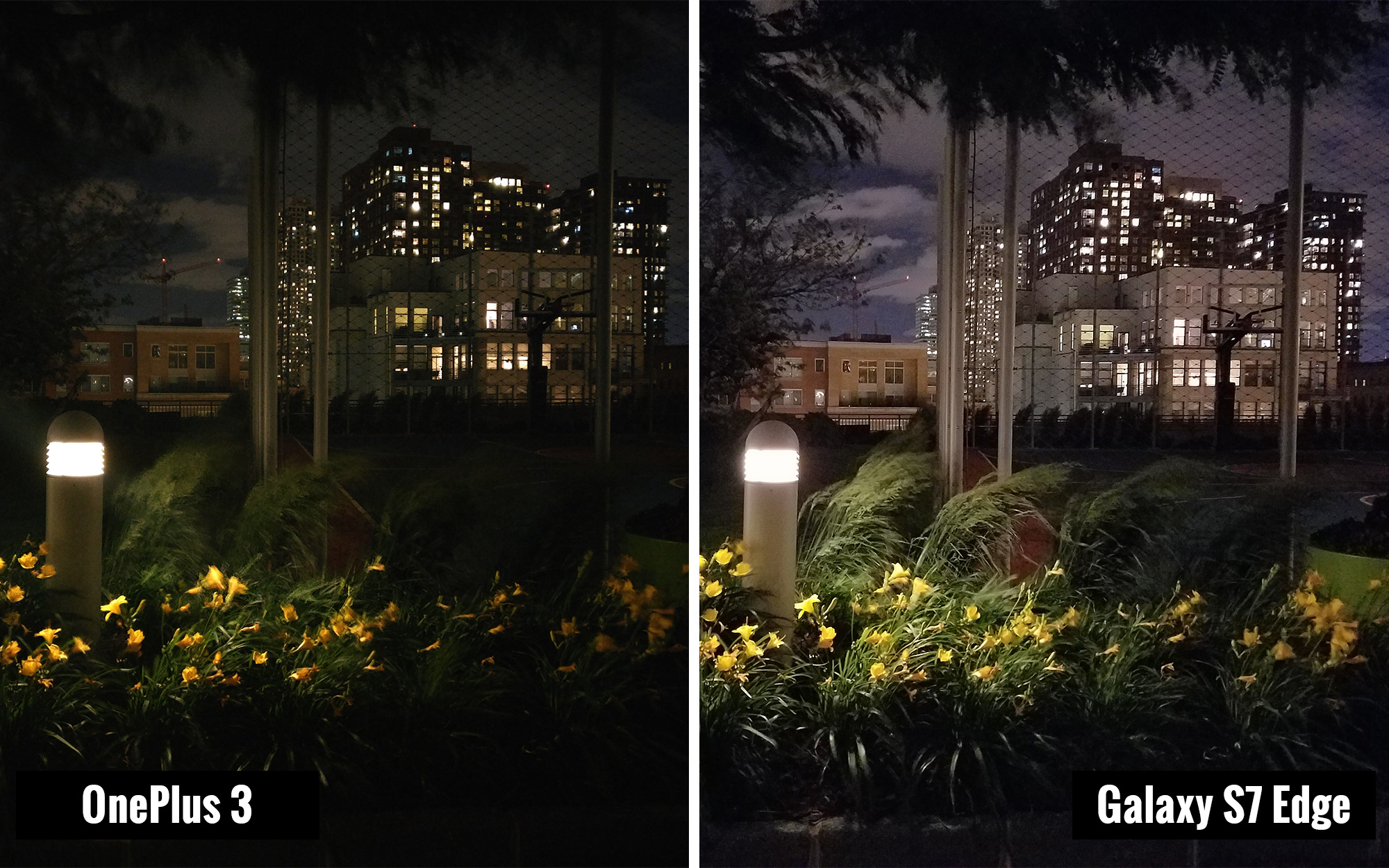
Unfortunately, the OnePlus 3 didn't fare as well at night. Although its built-in de-noise function helps reduce the graininess and splotchy backgrounds you see in a lot of low-light photos, the f/2.0 lens on the OnePlus 3's rear camera lets in a lot less light than the S7 Edge's f/1.7 lens. As a result, the OnePlus 3's photos looked pretty underexposed next to shots from the S7 Edge.
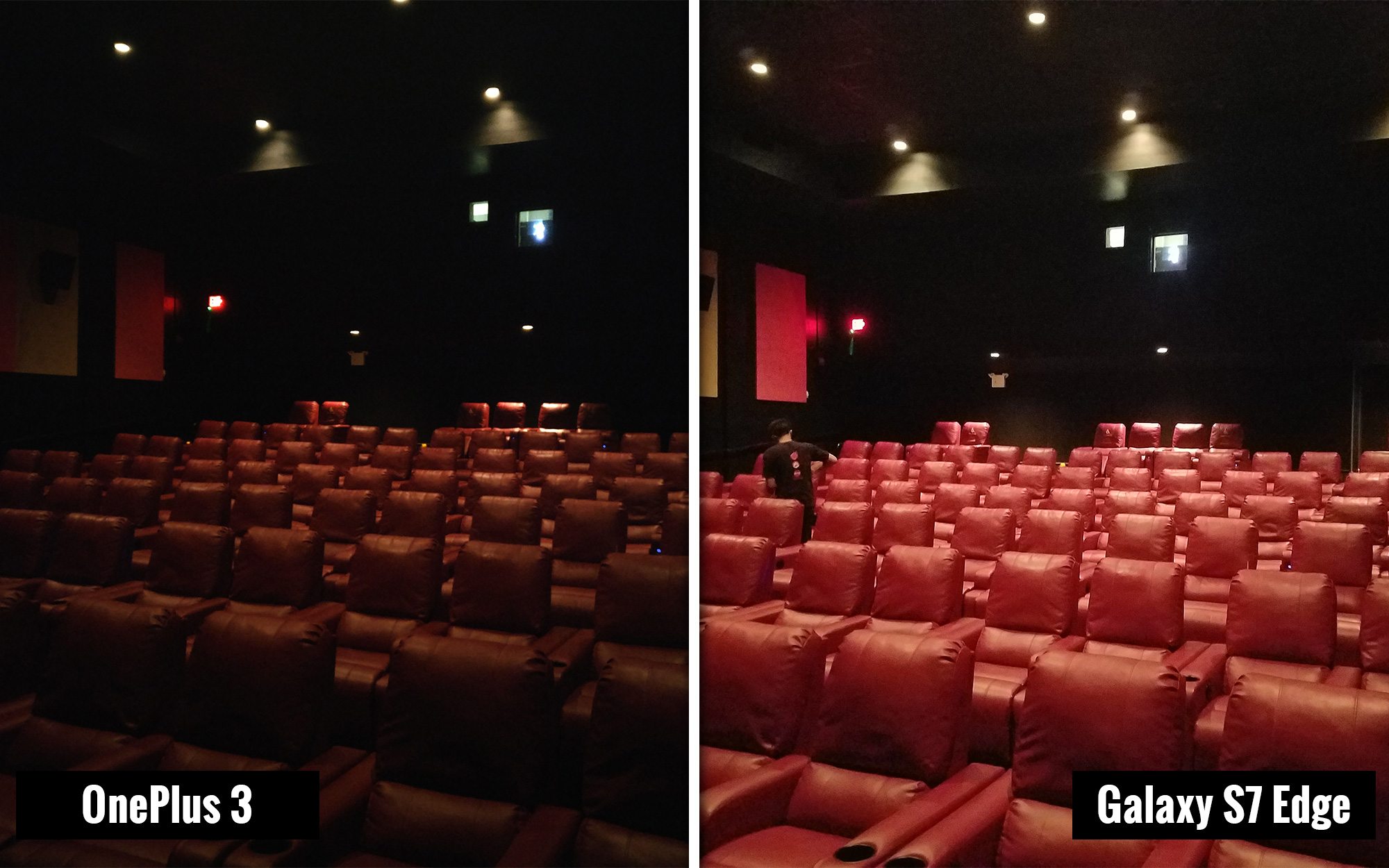
In a test at a nearby theater, even after the lights came up, the OnePlus 3's photo was significantly darker than the one from the S7 Edge. And the same thing happened outdoors at night. Even with a light directly in the frame, the S7 Edge's photo was brighter, featured more detail in the night sky and flowers, and captured an overall sharper photo.
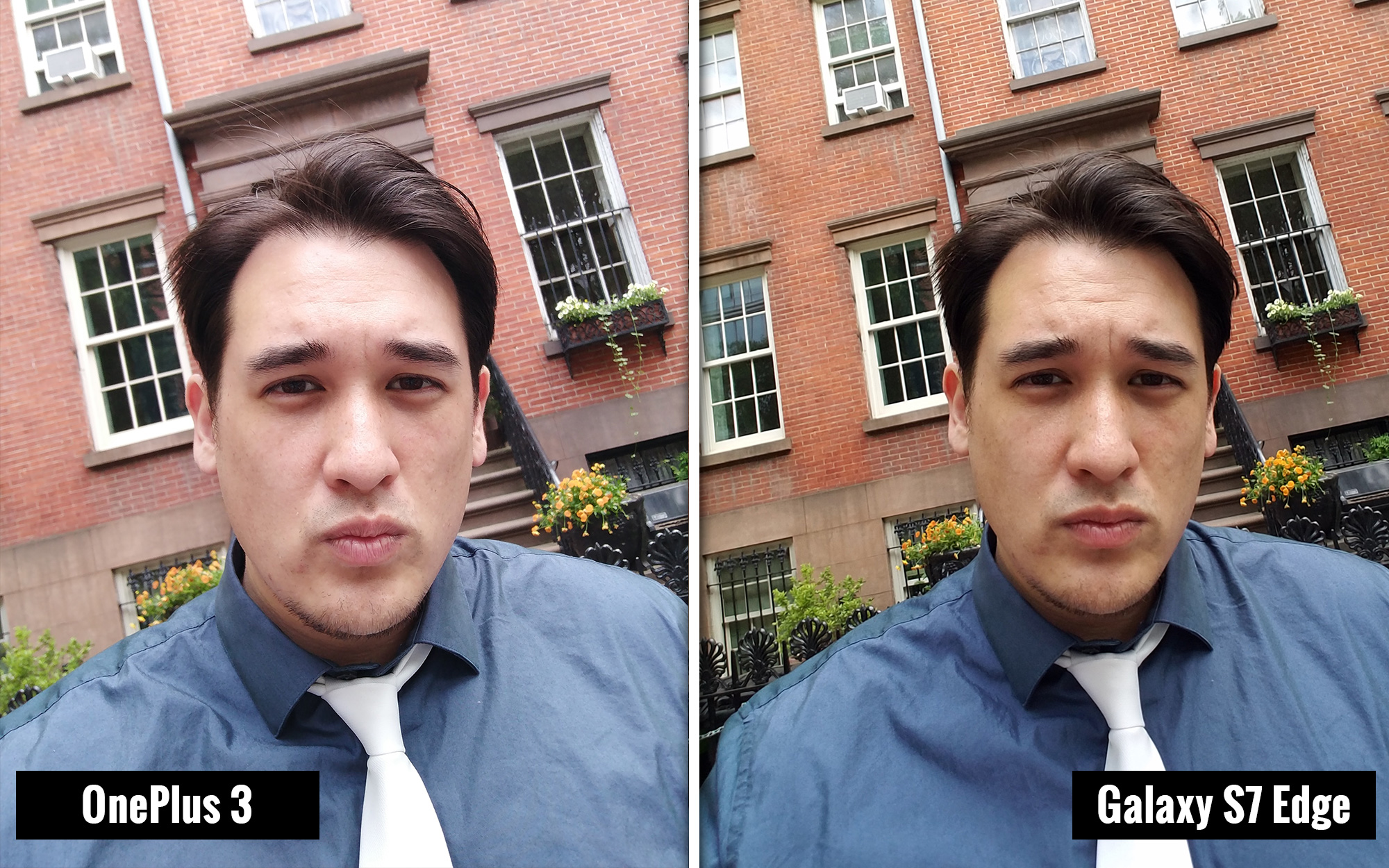
For selfie lovers, the OnePlus 3's 8-MP front camera includes a smile-detection feature that snaps a picture when you flash those pearly whites. But because I feel like a fool when I force a smile, I ended up snapping some selfies in the style of Derek Zoolander instead.
The OnePlus 3 makes up for its middling battery life with what might be the fastest charging speed on the planet.
The OnePlus 3's front camera has a higher resolution than most phones' front cameras, and lets you capture a lot of details in your face. However, it favors the wide-angle view like you get on the S7 Edge, which makes Samsung's phone better for group selfies.
Performance: 6GB is the new standard for RAM
The OnePlus 3 includes a Qualcomm Snapdragon 820 processor, which is the same chip found in the Galaxy S7, the HTC 10, the LG G5 and others. But the OnePlus 3's true standout feature is that it's one of the first phones in the world with 6GB of RAM. That much memory results in a superfast phone that lets you switch between apps like lightning, even if you have 15 or 20 of them running in the background.
Although the OnePlus 3 doesn't have an SD card slot, the 64GB of onboard storage means that you'll fret a lot less about running out of storage than you would with the 16GB you get on a starting iPhone.
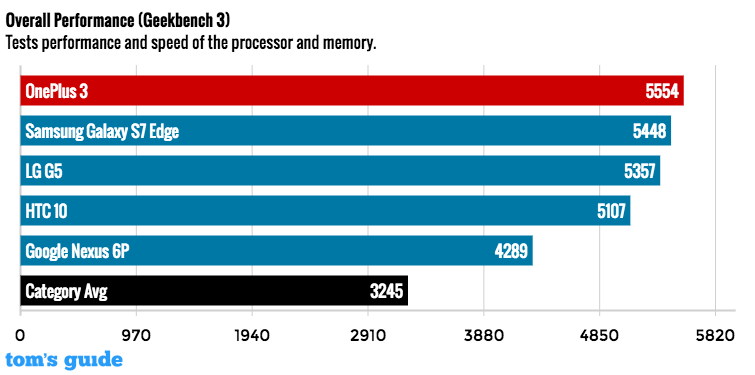
On Geekbench 3, which measures overall performance, OnePlus seems to have squeezed every last bit of swiftness out of the OnePlus 3. It scored 5,554, which was actually a bit higher than what we saw from the S7 Edge (5,448) and the HTC 10 (5,107), and markedly better than the Google Nexus 6P (4,289).
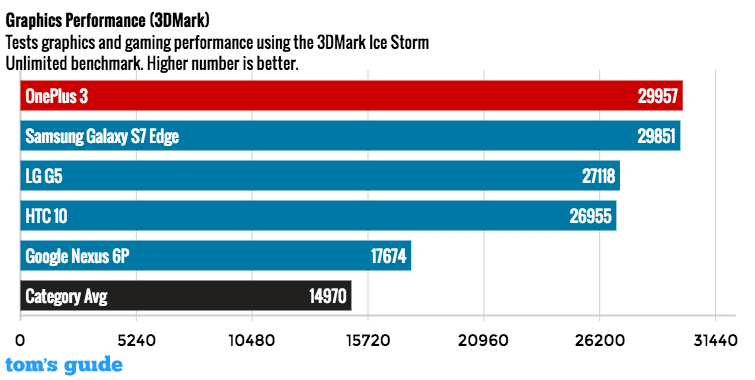
The results for graphics were similar: The OnePlus 3's score of 29,957 on 3DMark's Ice Storm Unlimited graphics test beat the S7 Edge (29,851), the HTC 10 (26,955) and the Nexus 6P (17,674).
MORE: Best Cheap Unlocked Smartphones
Even when we used VidTrim to convert a 1080p video to 480p, the OnePlus 3 came out on top. With a time of 3 minutes and 29 seconds, the OnePlus 3 was 20 to 30 seconds faster than the HTC 10 (3:50) and the S7 Edge (4:00).
Battery Life: Average runtime, chart-topping recharging
My one disappointment with the OnePlus 3 is that even with such a big focus on battery life, its longevity was just average. On the Tom's Guide Battery Test (continuous web surfing over AT&T's LTE network), the OnePlus 3 lasted 8 hours and 33 minutes. The HTC 10 (9:56), Galaxy S7 Edge (10:09) and Nexus 6P (12:25) all lasted significantly longer.
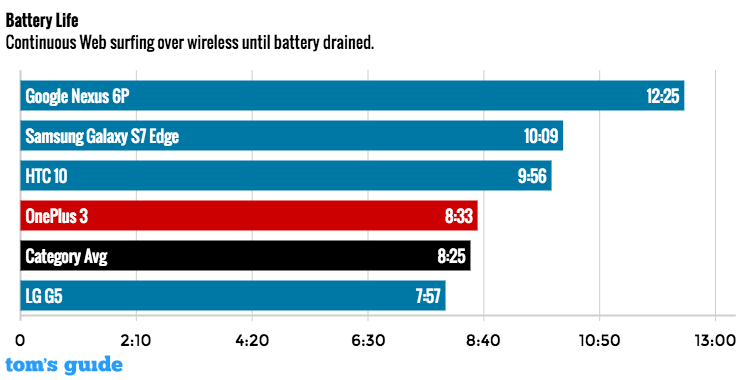
Thankfully, the OnePlus 3 makes up for its middling battery life with what might be the fastest charging speeds on the planet. With its 4-amp Dash Charge adapter, the OnePlus 3 can recharge its battery by up to 60 percent in 30 minutes, no matter if the phone is playing a game, watching a video or just sitting there taking in juice. That's a big difference from other phones with fast charging that fill up fast if you leave them alone, but struggle if you actually use them while recharging.
MORE: Smartphones with the Longest Battery Life
With the battery starting at 10 percent, I plugged the OnePlus 3 and the Galaxy S7 Edge into the wall with their respective chargers. Then, I streamed a 1080p video from YouTube. After 30 minutes, the OnePlus reached 71 percent. Meanwhile, the S7 Edge languished far behind, at just 34 percent over the same period. When it comes to real-world recharging, the OnePlus 3 gets top marks.
OS: Making Android 6.0 better without the bloat
Reviewers often complain when an Android phone comes with a skinned or altered version of Google's OS, but with OnePlus' OxygenOS, the company has enhanced Android 6.0 without the slowdown that can occur on non-stock phones. OnePlus uses a very light touch to add features such as a built-in dark mode (which is especially useful on phones with AMOLED screens), and custom color choices for the LED notification light, but with the clean material design of Android Marshmallow.

OnePlus says it focused on three core principles to guide its fork of Android 6.0: speed, stability and battery life. So you don't see things such as dropped frames, which cause the screen to look jumpy while you're scrolling. That leaves you with a phone that feels fast and fluid at all times. If you're going to mess around with stock Android, this is how you should do it.
Networks
The OnePlus 3 will be available unlocked directly from the company — and for the first time, you won't need an invite to get a OnePlus phone. However, because the OnePlus 3 doesn't have full support for CDMA bands, you are limited to GSM carriers such as AT&T and T-Mobile if you want 4G LTE coverage.
Bottom Line
Despite some minor issues with the camera and just-OK battery life, the OnePlus 3 is a phone that's hard not to love. You get top-tier performance, 6GB of RAM, 64GB of storage, a seductive all-aluminum body and a rich 5.5-inch AMOLED screen, all for just $399. That's $300 less than the S7 Edge or the HTC 10, and $100 less than the Nexus 6P.

So although the Samsung Galaxy S7 Edge remains the best phone on the market, the OnePlus 3 will probably be the one I recommend more often to friends and family. Because if you don't need to spend top-shelf money to get a first-rate phone, why would you? With its latest phone, OnePlus has finally made the flagship killer that we've been dreaming of.
Sam is a Senior Writer at Engadget and previously worked at Gizmodo as a Senior Reporter. Before that, he worked at Tom's Guide and Laptop Mag as a Staff Writer and Senior Product Review Analyst, overseeing benchmarks and testing for countless product reviews. He was also an archery instructor and a penguin trainer too (really).
